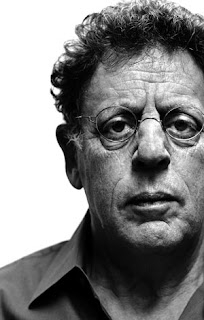The American Composer's Orchestra premieres Philip Glass' Ninth Symphony.
The New York premiere of a composer's Ninth Symphony is a momentous occasion. When the composer is Philip Morris Glass, the most important voice in American music in the last three decades, the occasion is simply historic.
On Tuesday night, Mr. Glass' friend and collaborator Dennis Russell Davies led the American Composers Orchestra in the first U.S. performance of the Glass Ninth, paired with the New York premiere of Lamentate by Arvo Pärt. The concert also marked Mr. Glass' 75th birthday, which will be celebrated throughout 2012 in opera houses and concert halls around the world.
Mr. Pärt's work was both puzzling and frustrating, a sort of piano concerto with the orchestra playing in dissipated fragments. The very absence of a center line meant that the listener was forced to draw on the pauses as elements of sound, constructing the structure negatively as the orchestra played on. The work seemed to wander for 37 minutes between what the composer described as two polarities.
The first of these is a Mahlerian brass theme, that occasionally repeats, contrasted with a second figure for the strings and piano. But in building from these slender materials, it proved difficult to grasp the entire structure as it unveiled. Piano soloist Maki Namekawa did an admirable job with the solo part, although her hot pink concert gown was the most vibrant thing about the performance.
Philip Glass is not primarily known as a symphonist, but has honed his craft over the last two decades at the prompting of Mr. Davies. He started with the "Low" Symphony (based on the work of David Bowie and Brian Eno) and explored choral writing, poetry and folklore in his Fifth, Sixth and Seventh. The Ninth has the same structure as the Eighth, with three similar movements. But in this work, the years of honing pay off in a big, muscular composition that makes virtuosic use of a large orchestra. |
| Composer Philip Glass turned 75 last night. Photo from Orange Mountain Music. |
The New York premiere of a composer's Ninth Symphony is a momentous occasion. When the composer is Philip Morris Glass, the most important voice in American music in the last three decades, the occasion is simply historic.
On Tuesday night, Mr. Glass' friend and collaborator Dennis Russell Davies led the American Composers Orchestra in the first U.S. performance of the Glass Ninth, paired with the New York premiere of Lamentate by Arvo Pärt. The concert also marked Mr. Glass' 75th birthday, which will be celebrated throughout 2012 in opera houses and concert halls around the world.
Mr. Pärt's work was both puzzling and frustrating, a sort of piano concerto with the orchestra playing in dissipated fragments. The very absence of a center line meant that the listener was forced to draw on the pauses as elements of sound, constructing the structure negatively as the orchestra played on. The work seemed to wander for 37 minutes between what the composer described as two polarities.
The first of these is a Mahlerian brass theme, that occasionally repeats, contrasted with a second figure for the strings and piano. But in building from these slender materials, it proved difficult to grasp the entire structure as it unveiled. Piano soloist Maki Namekawa did an admirable job with the solo part, although her hot pink concert gown was the most vibrant thing about the performance.
The familiar Glass ideas are present: ostinato rhythms, built from whole-tone arpeggios that repeat in an obsessive fashion before changing tack and giving way to a new set of repetitions. But the writing is meatier than in his early period, and the orchestration lends gravitas to the musical ideas. The writing technique actually recalls complex, so-called "progressive" rock music, with the music never flowering fully before changing direction on the listener's frustration and fascination..
Over his 40 year career, repetition remains a central idea in Mr. Glass's oeuvre. So perhaps it is fitting that each abstract movement of the Ninth is built on the same frame. Each movement starts slowly, building to a loud, almost Brucknerian climax. Like Strauss' Alpensinfonie, the true climax is at the center of the middle movement, a stunning peak of sound that had the Carnegie Hall audience on edge.




